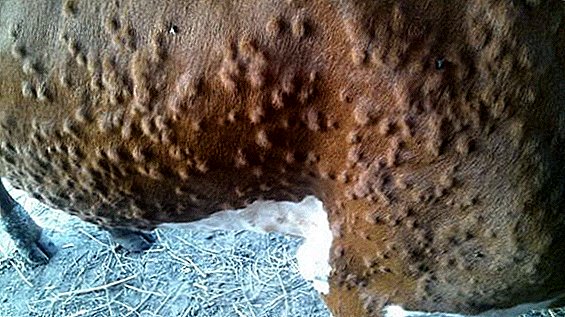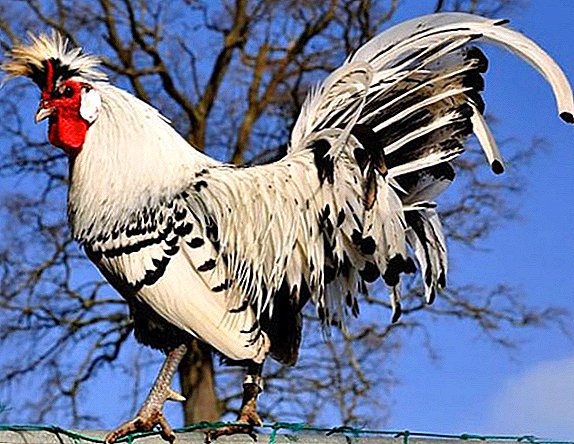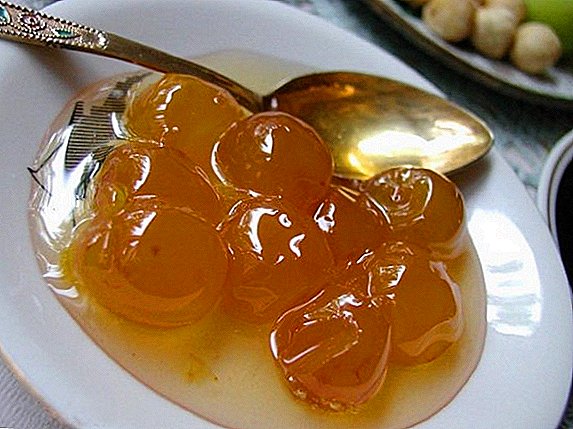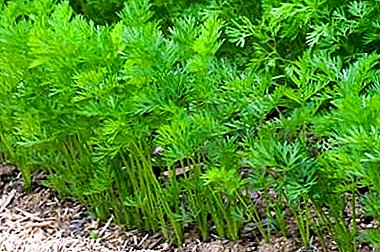
The system of closed planting of an orchid was invented quite recently and all flower growers immediately divided into two camps - for those who liked the system and, conversely, to fierce opponents of it. The flower is usually grown in a pot, which has drainage holes that serve for the outflow of water and ventilation. And the main feature of the closed system is to plant an orchid in a container without holes. Water is poured to the bottom.
What it is?
Since water is always at the bottom of the container, the roots of the plant all the time to reach for moisture, that is, down. The root system develops well, clogged roots wake up, and this in turn contributes to the rapid development and growth of foliage, peduncles. The risk that the upper part of the roots dries is reduced to a minimum, since the humidity in the pot is high. Water will not allow the moss layer to evaporate, which is laid out on top.
Advantages and disadvantages
Pros:
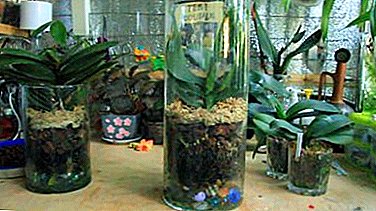 Significantly saves time. Orchids do not need much attention and care for it will be easy, the only thing you need is to add water once a month.
Significantly saves time. Orchids do not need much attention and care for it will be easy, the only thing you need is to add water once a month.- You can instantly reanimate a half-dead flower. Often, on sale there are orchids with already rotten roots, without foliage, and many people think that such a plant is hopeless, but it is not. Planting in a closed system, it comes to life, the roots are restored, and over time the orchid begins to bloom.
- Lush leaves and abundant flowering.
- If the climate is dry, then this method of cultivation is ideal.
- The roots are protected from rot. Potted moss has powerful disinfectant and antibacterial properties.
Minuses:
- There may be a decay of the growth point or roots.
- Often in the substrate insects infest.
- Mold appears.
- Too desiccated plants cannot be transferred to a closed system.
- Cannot be used in humid climates.
- Possible germination of green algae on the walls of the container.
We offer to watch a video about the pros and cons of a closed orchid growing system:
How long can grow?
Flower growers who adhere to traditional planting methods say that the closed method can be used temporarily. However, supporters of this system claim the opposite. If you follow all the rules and maintain competent care, the orchid will retain its health and will live for many years.
Step-by-step landing instructions
Capacity Selection
 The best glass container. It is more resistant than plastic and looks more aesthetic.
The best glass container. It is more resistant than plastic and looks more aesthetic.
Glass does not have a porous structure, and this will prevent ingrowth of rhizomes. The shape of the pot can be taken any, except rounded, because when transplanting will not be able to pull out carefully, without damaging the orchid. Children can be planted in glasses, glasses, everything that falls under the arm. And adult plants will need a large capacity: multi-liter vases or small aquariums.
Important! The vessel should be transparent, because it is easier to monitor the water level and observe what is happening inside.
Substrate preparation
The soil intended for landing in the closed way includes more than one component. Between you can not mix Laying occurs layer by layer:
- expanded clay;
- sphagnum;
- bark or substrate for orchids;
- charcoal.
All components can be purchased at flower shops, and bark and moss can be collected independently in the forest, if possible. To prevent the formation of mold, and the free air felt free, the crust is necessary large. Sphagnum moss will need live, which has small green twigs, after the time the moss grows.
Inventory
All content is poured directly from the packages into the container, while nothing boils or disinfected. The only thing that needs to be done is to thoroughly wash the pot for planting, before that, to sanitize the blade, which will remove rotten and dead roots, if there are any.
Flower placement
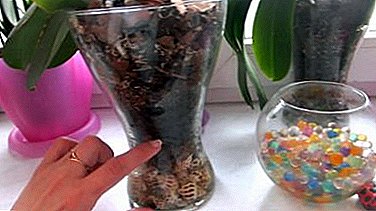 At the bottom put clayite 3-5 centimeters thick.
At the bottom put clayite 3-5 centimeters thick.- Next, a layer of moss, about 1-2 centimeters wide.
- The third layer is bark mixed with coal.
- Now we straighten the roots of the flower and place it in the container. The neck should not go deep into the tank, its place on the surface.
- The pot is filled to the top with bark so that the orchid sits tightly and does not dangle from side to side.
- Moss placed on top. Will help protect moisture.
- Then all this is filled with water, and 30 minutes later it drains, but not completely. The bottom layer of expanded clay should be covered with liquid.
- At this landing procedure is completed. It remains only to put the flower in a suitable place for it, where the temperature and lighting will be optimal.
We offer to watch a video about planting orchids in a closed system:
Difficulties and problems
- Too large and deep vessel - the most famous problem in florist. A flower in such a pot will dry out, because the root system is far from water. Conclusion - it is not necessary to take pots for growth.
- Another nuisance is mold. It will disappear by itself, it will happen when the plant adapts and begins to grow actively.
- The wet land is loved by a midge. You need to find out the type of insects, their degree of danger, and then choose the appropriate method of struggle.
Adaptation
The adaptation period depends on the degree of impact on the root system. With a radical procedure, pruning a lot of dead roots, it can drag on. It is necessary to adhere to a few tips so that this does not happen: the transplant is made only at the time of active growth, immediately feeding is not given.
Care
- Top dressing. Fertilizers are applied after the plant has started to grow and has taken root. Being in such a system, the orchid does not require a large number of dressings. 10 times less from what is indicated on the package.
- Watering. No need for spraying and watering. As long as condensation is visible on the walls of the pot, the flower does not need additional moisture. Watering is as follows: water is poured by a stream, until the entire layer of expanded clay is covered. This fluid level is always maintained.
It does not matter what planting will be, traditional or in a closed system, the main thing is to follow all the rules and recommendations for transplantation, as well as to observe the optimal conditions for the orchid.


 Significantly saves time. Orchids do not need much attention and care for it will be easy, the only thing you need is to add water once a month.
Significantly saves time. Orchids do not need much attention and care for it will be easy, the only thing you need is to add water once a month. At the bottom put clayite 3-5 centimeters thick.
At the bottom put clayite 3-5 centimeters thick.
